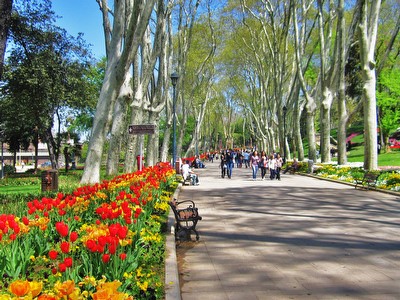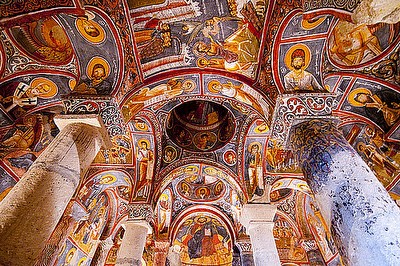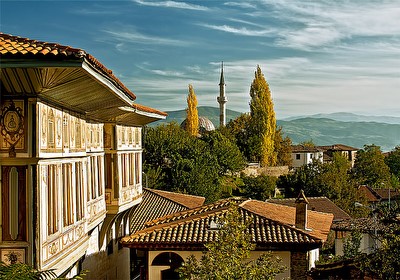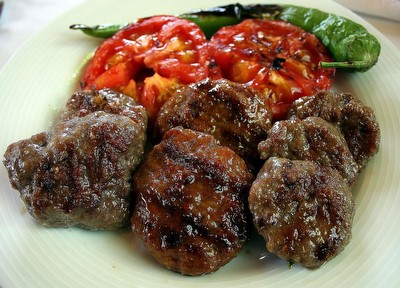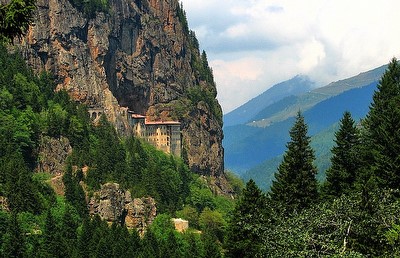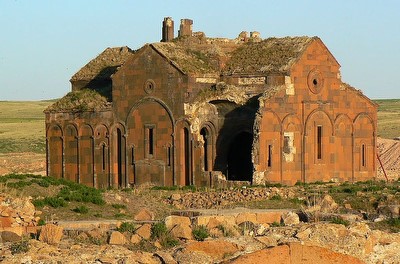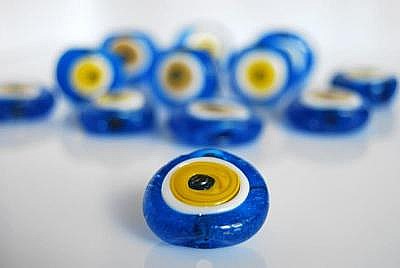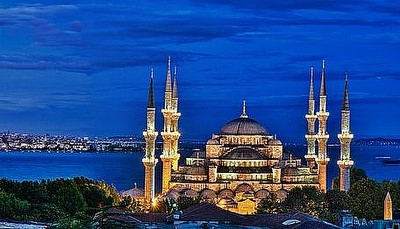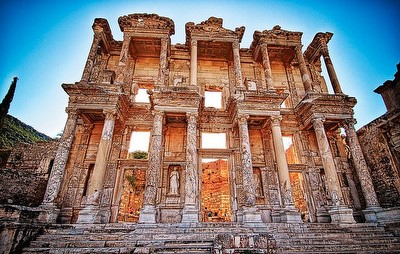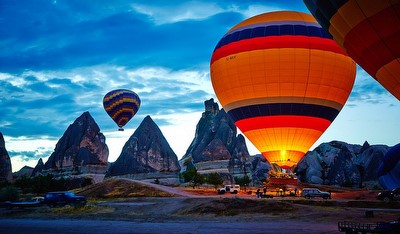ARMENIAN RUINS IN EASTERN TURKEY
Kars first came to prominence in the 10thC when it was the capital of the Armenian Bagratid Dynasty. It remained an important garrison town, even when the Armenians moved the capital to nearby Ani. During the occupation of the city by Russians many "Belle Epoch" buildings, which are still elegant, inspite of the fact that they are desperately in need of a lick of paint were constructed and today the tree lined walkways of the towns centre are dotted with fountains. One of the highlights of the town is the museum which houses artifacts from the early Bronze Age, right up to the Russian occupation, many of which have been unearthed around Ani. There are also photographs of Armenian churches in the district. The 19thC bell and a pair of carved wooden doors are from the Russian era. The ethnographic section contains costumes, local handicrafts, carpets and kilims.
Ani lies between it and the village of Ocakli. The River Aras flows into the Caspian Sea some 60Km to the east. The gorge forms an uneasy border between the Republics of Türkiye and Armenia It is believed that a settlement had been on the naturally defensible site since ancient times, which, at its zenith, was a city of some 1,100,000 inhabitants. It came into prominence during the Armenian Bagratid dynasty who carved themselves a kingdom in the mountains of eastern Anatolia in the 10thC. King Ashot III, 952 to 977 AD, moved the capital from Kars and the city was propelled into the annals of history.
It grew into a fortified fortress and was endowed with many fine buildings and prospered with the arrival of the caravans that passed through the city. The narrow road, actually a glorified dirt track, which forms the border between the Republic of Turkey and Armenia, crosses an open landscape of lush verdant meadows filled with grazing horses and cattle, and fields of cereals. Dotted around are bee hives, which are a source of the regions famous honey. On a clear day the huge mound that is Mount Ararat, is visible across the valley.
Akdamar Kilisesi is a small island located 3Km from the shore of Lake Van. Perched atop is the Church of the Holy Cross. The local Armenian community used it as a refuge in medieval times and in 921AD King Gagik built a stronghold and palace on the island. There are few remains of the buildings, although the Armenian Church, which he endowed, still stands. There are several reliefs inside which illustrate various well known biblical stories, such as Adam and Eve, on the north wall. They are depicted standing by the Tree of Life, prior to the fateful deed with the apple. On the south wall David is depicted slaying Goliath, along side Noah and the Ark. Another scene shows Abraham preparing to sacrifice his son, Isaac. On the outside there are exquisite and delicately carved band of high reliefs, which depict Noahs Ark, full of animals, entwined with a grape vine. It is considered to be one of the finest examples of ancient Armenian works.
The church which was a monastic complex until the 1920s, deteriorated after it was abandoned during W.W.I. , and today has become a symbol of a delicate reconciliation process between Türkiye's and the Armenian communities.
After a $1.5 million, restoration, the church re-opened in 2007, as a museum.
The small island is covered with rough grass but is an ideal picnic spot, especially under the almond trees. On a clear day one can see the reflection. in the turquoise waters, of the reflection of Mount Suphan, invariably with its covered snow capped peak.
The rarely visited island of Carpanak is sometimes visible to the west of Van, where Armenians also built a church.
Vakıflı Köyü is the only remaining Armenian village in Turkey with a population of 130 Turkish–Armenian residents. Located on the slopes of Musa Dagh in the Samandağ district of Hatay Province, the village overlooks the Mediterranean Sea and is within close proximity to the Syrian border.
Their local Armenian dialect is very thick, and cannot be fully understood by other Western Armenians.
Time to discover Mutlu’s Eastern Turkey


